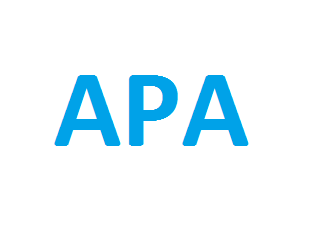
The Academic Perspective Procedia publishes Academic Platform symposiums papers as three volumes in a year. DOI number is given to all of our papers.
Publisher : Academic Perspective
Journal DOI : 10.33793/acperpro
Journal eISSN : 2667-5862
Investigation of Liquefaction and Lateral Spreading in Riverside Soils
Sedat Sert;Ertan Bol;Aşkın Özocak
1264
459
Abstract
It is planned to construct some buildings within the scope of recreation project (Sakarya Park-2) which is planned to be built on the banks of Sakarya River in Erenler District of Sakarya Province. In this paper, the geotechnical assessment of the liquefaction and lateral spreading of the ground conditions is carried out for the structures planned to be built and the fortifications planned to be built on the riverside. In this study, plankote, current and application maps of the area were utilized and considering the seismicity of the region; soil profile was evaluated and possible problems were questioned by investigating foundation bearing capacity, settlements, liquefaction potential and lateral spreading risk.
Keywords:
Akarsu, kıyı yapısı, deprem, sıvılaşma, yanal yayılma
References
[1] Uzundurukan S, Göksan TS. Geoteknik mühendisliği ve eğitimi. Türkiye MühendislikHaberleri 2013. Sayı: 476, No: 2.
[2] TBDY 2018. Türkiye bina deprem yönetmeliği.
[3] Sakarya Üniversitesi Geoteknik Çalışma Grubu. Geoteknik Rapor 2019.
[4] Sert S, Bol E, Özocak A. Sıvılaşma ve yanal yayılmanın coğrafi bilgi sistemleri iledeğerlendirilmesi. ISHAD 3. Uluslararası Doğal Afetler ve Afet Yönetimi Sempozyumu,Sakarya, Türkiye, 04-06 Mayıs 2018; sayfa: 943-54.
[5] TSE. TS1900-I İnşaat mühendisliğinde zemin laboratuvar deneyleri - Bölüm I: fizikselözelliklerin tayini. Ankara; 2006.
[6] TSE. TS1900-II İnşaat mühendisliğinde zemin laboratuvar deneyleri - Bölüm II: mekaniközelliklerin tayini. Ankara; 2006.
[7] TSE. TS1500 İnşaat mühendisliğinde zeminlerin sınıflandırılması. Ankara; 2000.
[8] Bol E, Önalp A, Özocak A, Sert S. Estimation of the undrained shear strength of Adapazarifine grained soils by cone penetration test. Engineering Geology 1 November 2019: Vol.261, 105277.
[9] Önalp A, Bol E, Ural N. Estimation of undrained shear strength from cone tip resistance inclayey soils, Seventh International Congress on Advances in Civil Engineering, YildizTechnical University, Istanbul, Turkey: October11-13, 2006.
[10] Seed HB, Idriss IM. Simplified procedure for evaluating soil liquefaction potential. ASCEJournal of Geotechnical Engineering 1971; 97:9:1249-73.
[11] Seed HB. Soil liquefaction and cyclic mobility evaluation for level ground duringearthquakes. Journal of the Geotechnical Engineering Division, ASCE 1979; 105:2:201-55.
[12] Seed HB and Idriss IM. Evaluation of liquefaction potential of sand deposits based onobservations of performance in previous earthquake. ASCE National Convention, St.Louis, Missouri, USA 1981; Preprint 81 – 544.
[13] Bol E, Önalp A, Are, E, Sert S, Özocak A, Liquefaction of silts: the Adapazarı criteria.Bulletin of Earthquake Engineering, 2010:8:859-73.
[14] Toprak S, Holzer TL. Liquefaction potential index: field assessment. ASCE Journal ofGeotechnical Engineering 2003; 129:4:315-22.
[15] Robertson PK, Wride CE. Evaluating cyclic liquefaction potential using the cone penetrationtest. Canadian Geotechnical Journal 1998; 35:442-59.
[16] Ishihara K. Stability of natural deposits during earthquakes, Proc., 11th Int. Conf. on SoilMechanics and Foundation Engineering, San Francisco: 1985; 1:321-76.
[17] Robertson PK. Evaluation of flow liquefaction and liquefied strength using the conepenetration test. Journal of Geotechnical and Geoenvironmental Engineering, ASCE 2010;136:6:842-53.
[18] Youd TL. Liquefaction-induced lateral spread displacement. U.S. Navy 1993, NCELTechnical Note N1862
[19] Zhang G, Robertson PK and Brachman RWI. Estimating liquefaction-induced lateraldisplacements using the standard penetration test or cone penetration test. Journal ofGeotechnical and Geoenvironmental Engineering, ASCE 2004; 861-71.
[20] Ishihara K and Yoshimine M. Evaluation of settlements in sand deposits followingliquefaction during earthquakes. Soils and Foundations 1992; 32:1:173-88.
[21] Meyerhof GG. Discussion on research on determining the density of sands. Proc., 4th Int.Conf. of Soil Mechanics and Foundation Engineering, London 1957; 3:110.
[22] Tatsuoka F, Zhou S, Sato T, and Shibuya S. Method of evaluating liquefaction potential andits application. Rep. on Seismic hazards in the soil deposits in urban areas, Ministry ofEducation of Japan 1990: 75-109 (in Japanese).
[23] National Center for Earthquake Engineering Research-NCEER. Proc., NCEER Workshopon Evaluation of Liquefaction Resistance of Soils, TL Youd and IM Idriss, eds., Salt LakeCity 1997; Technical Rep. NCEER-97- 0022.
Cite
-
 %0 Academic Perspective Procedia (ACPERPRO) Investigation of Liquefaction and Lateral Spreading in Riverside Soils% A Sedat Sert , Ertan Bol , Aşkın Özocak% T Investigation of Liquefaction and Lateral Spreading in Riverside Soils% D 11/22/2019% J Academic Perspective Procedia (ACPERPRO)% P 1396-1409% V 2% N 3% R doi: 10.33793/acperpro.02.03.155% U 10.33793/acperpro.02.03.155
%0 Academic Perspective Procedia (ACPERPRO) Investigation of Liquefaction and Lateral Spreading in Riverside Soils% A Sedat Sert , Ertan Bol , Aşkın Özocak% T Investigation of Liquefaction and Lateral Spreading in Riverside Soils% D 11/22/2019% J Academic Perspective Procedia (ACPERPRO)% P 1396-1409% V 2% N 3% R doi: 10.33793/acperpro.02.03.155% U 10.33793/acperpro.02.03.155
© Academic Perspective 2018. All rights reserved.




